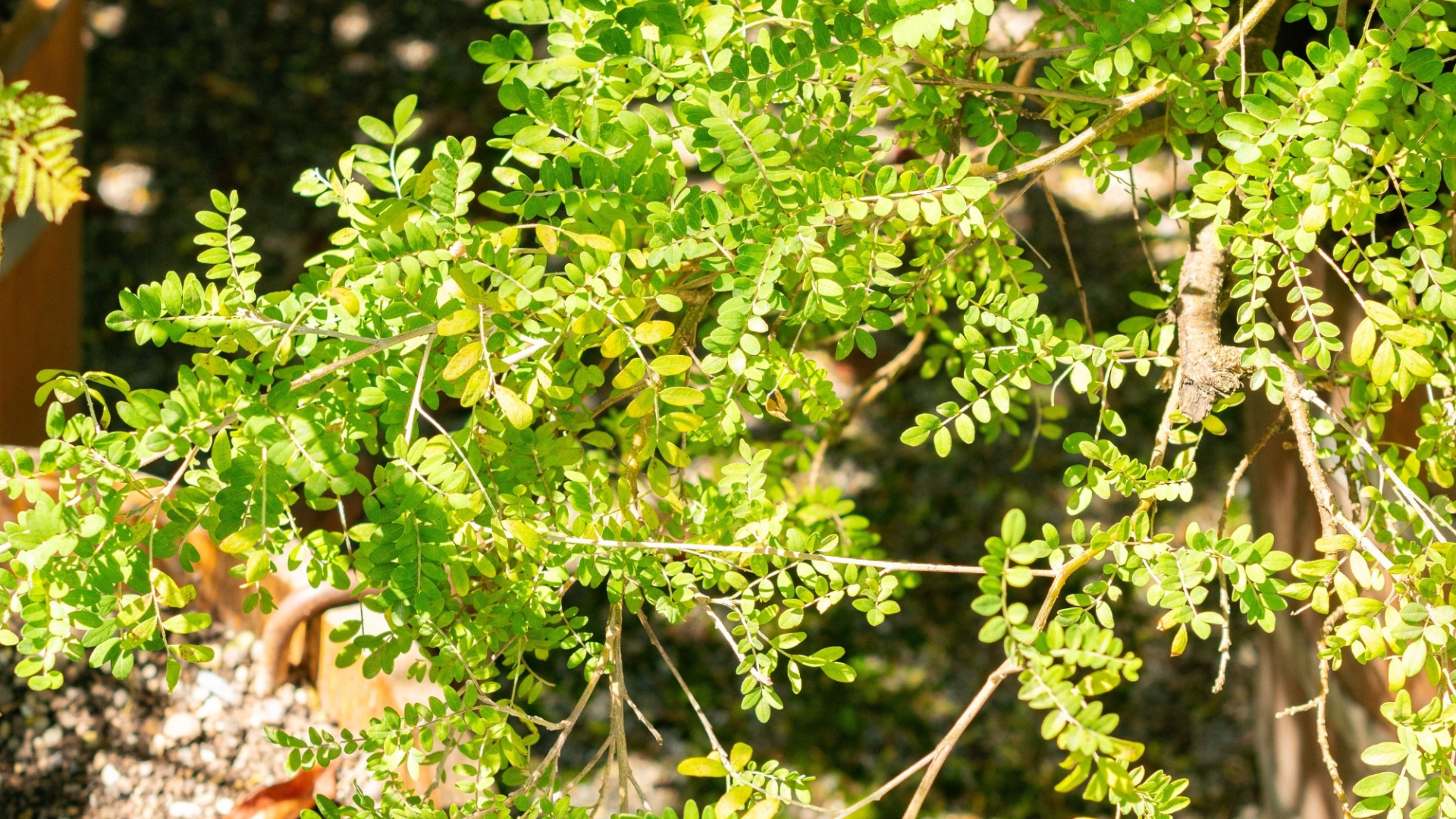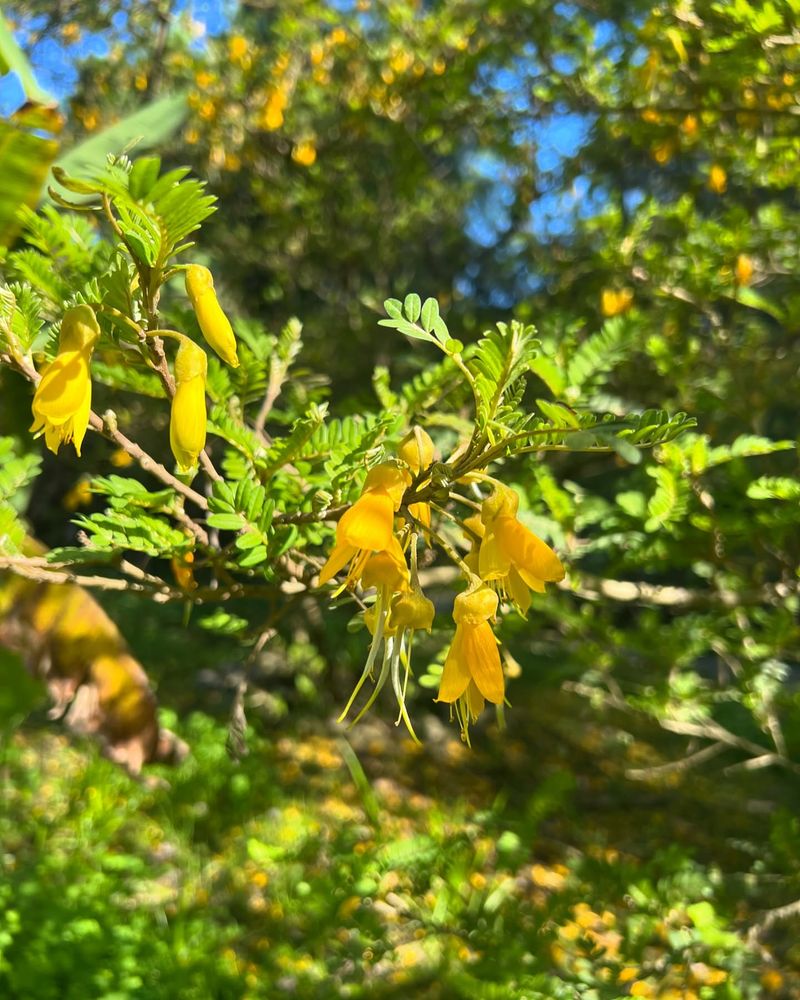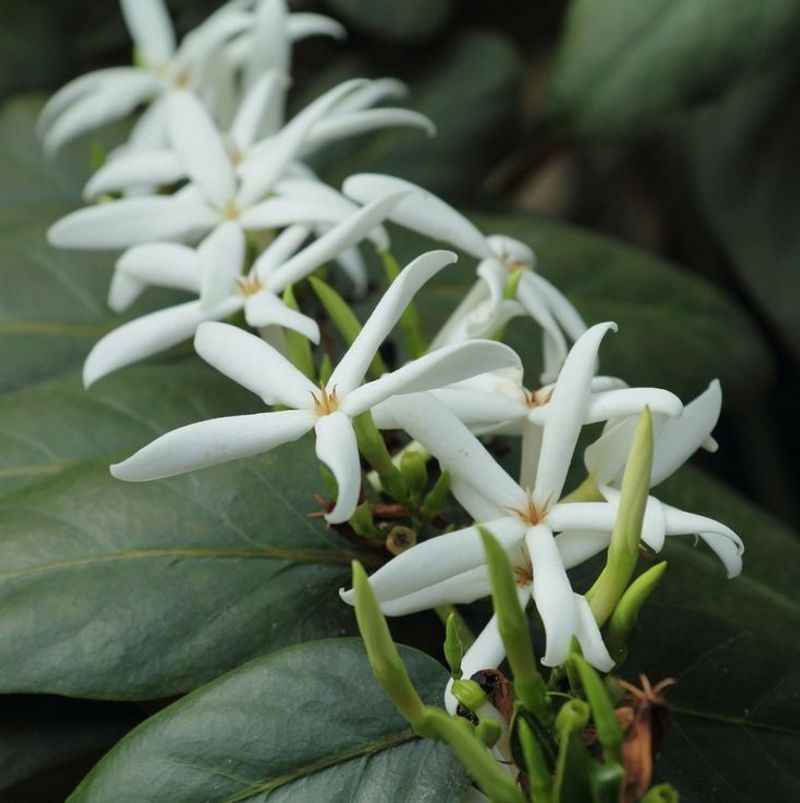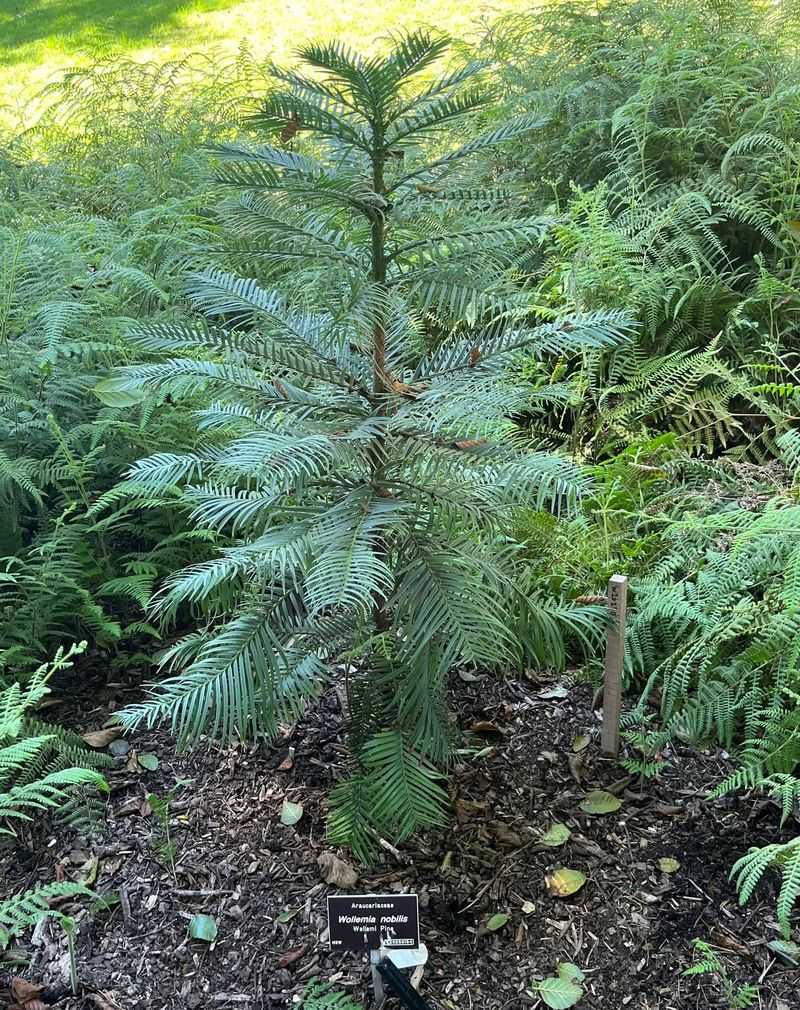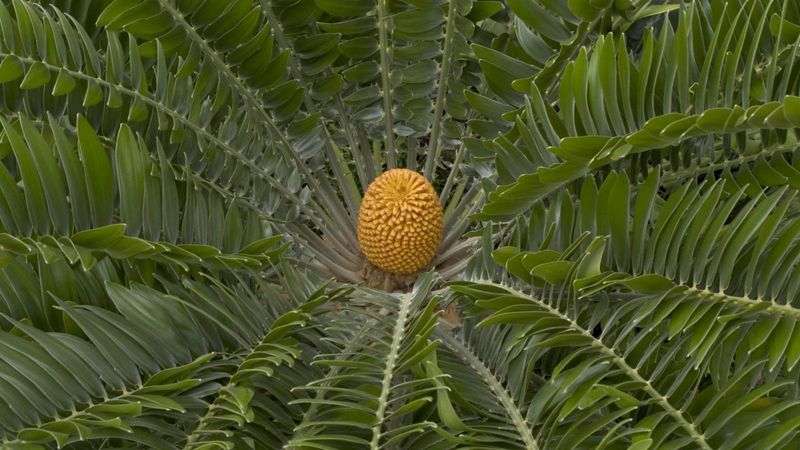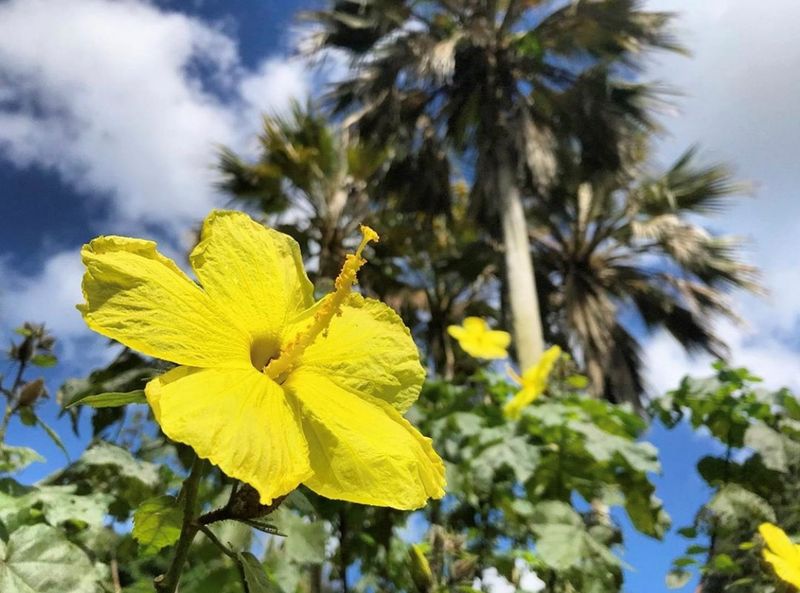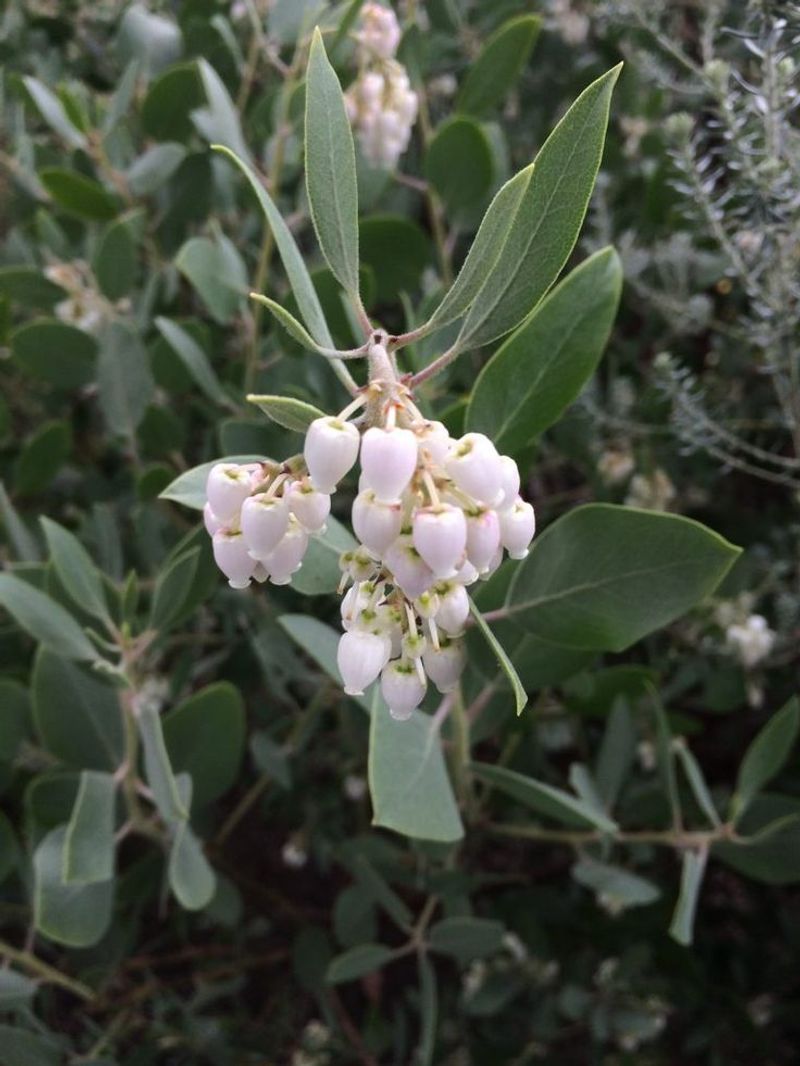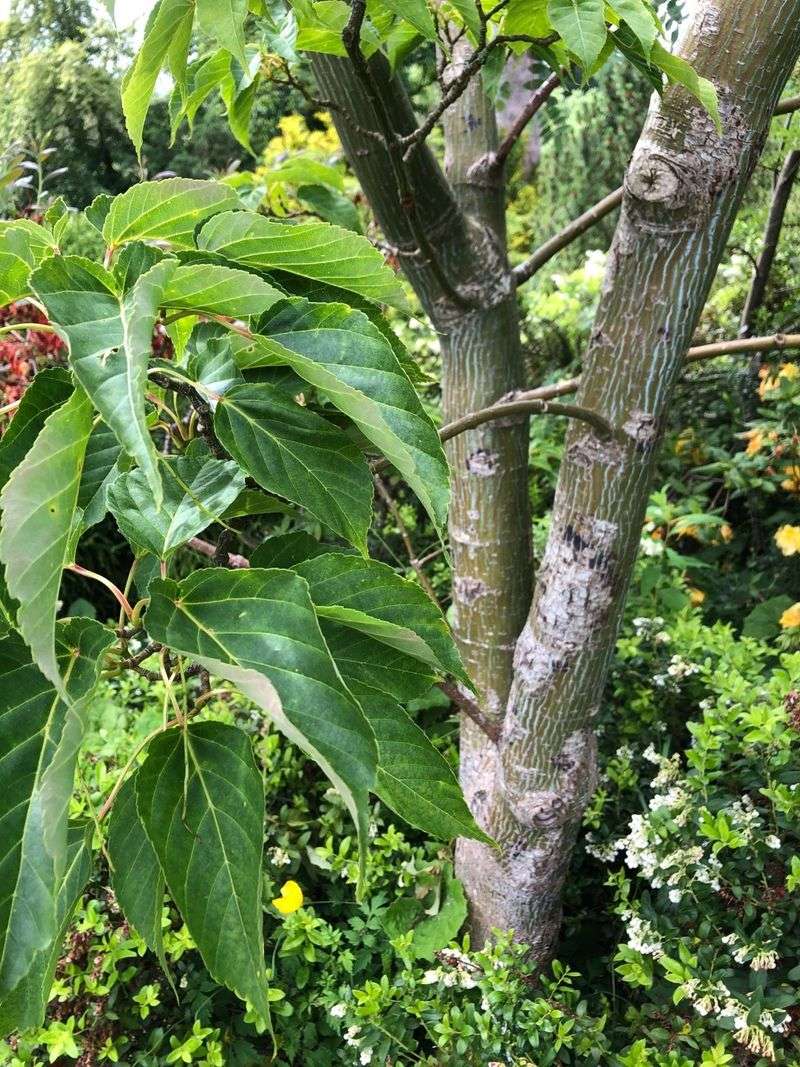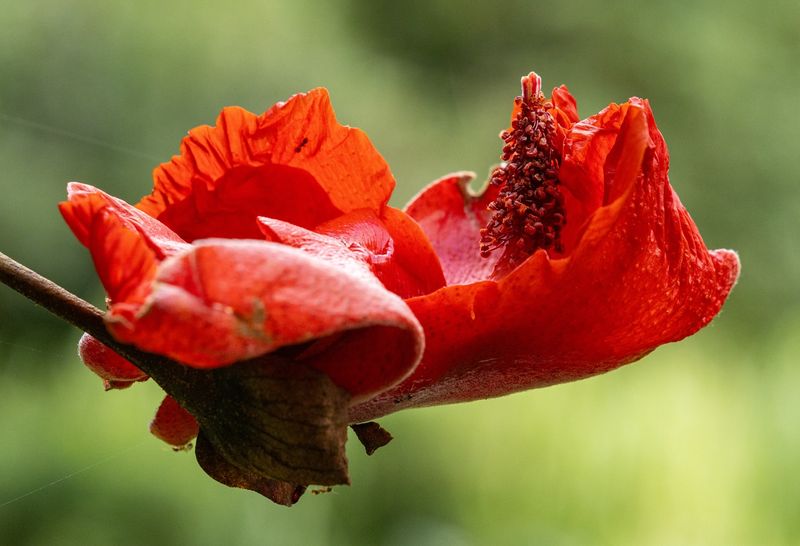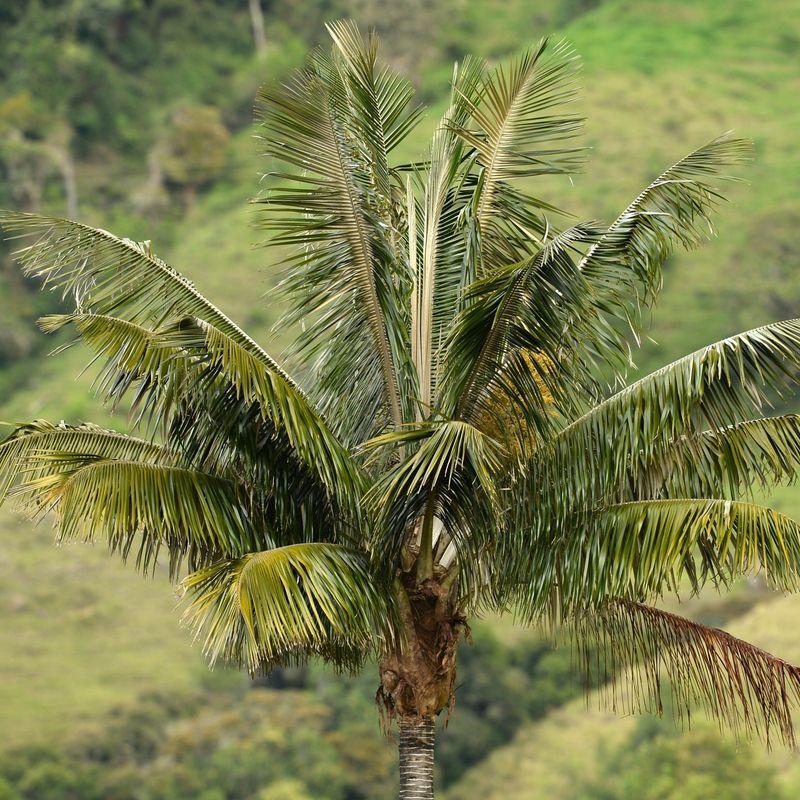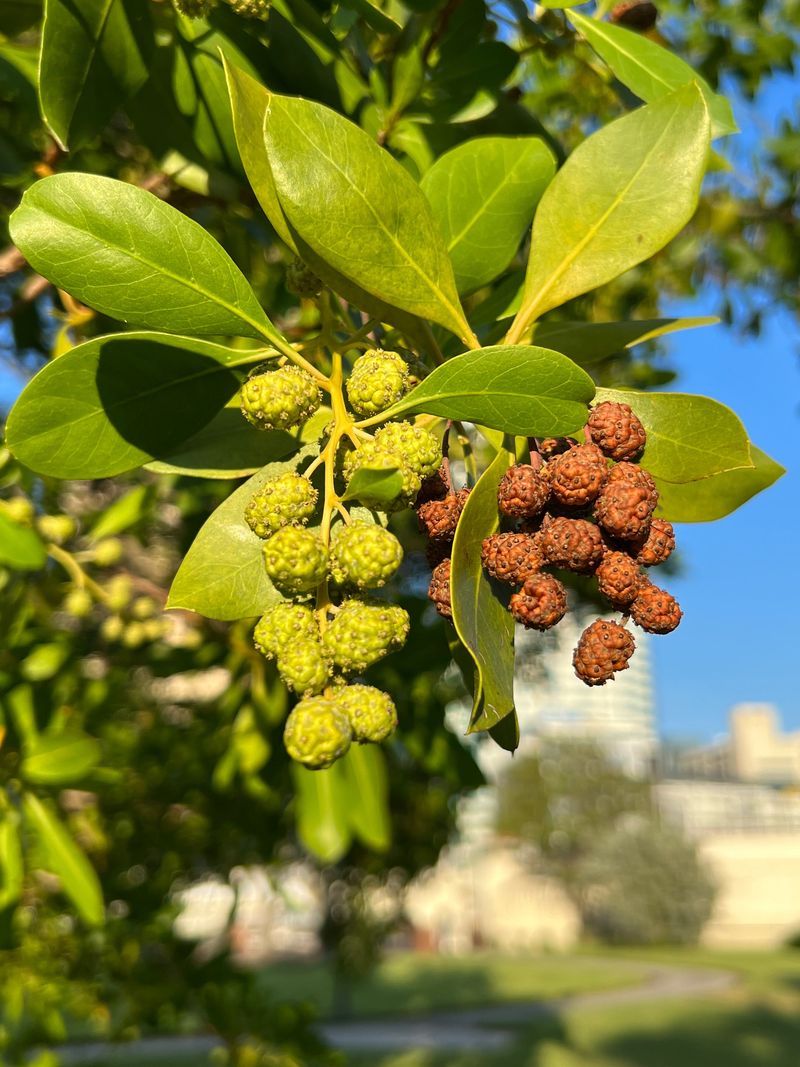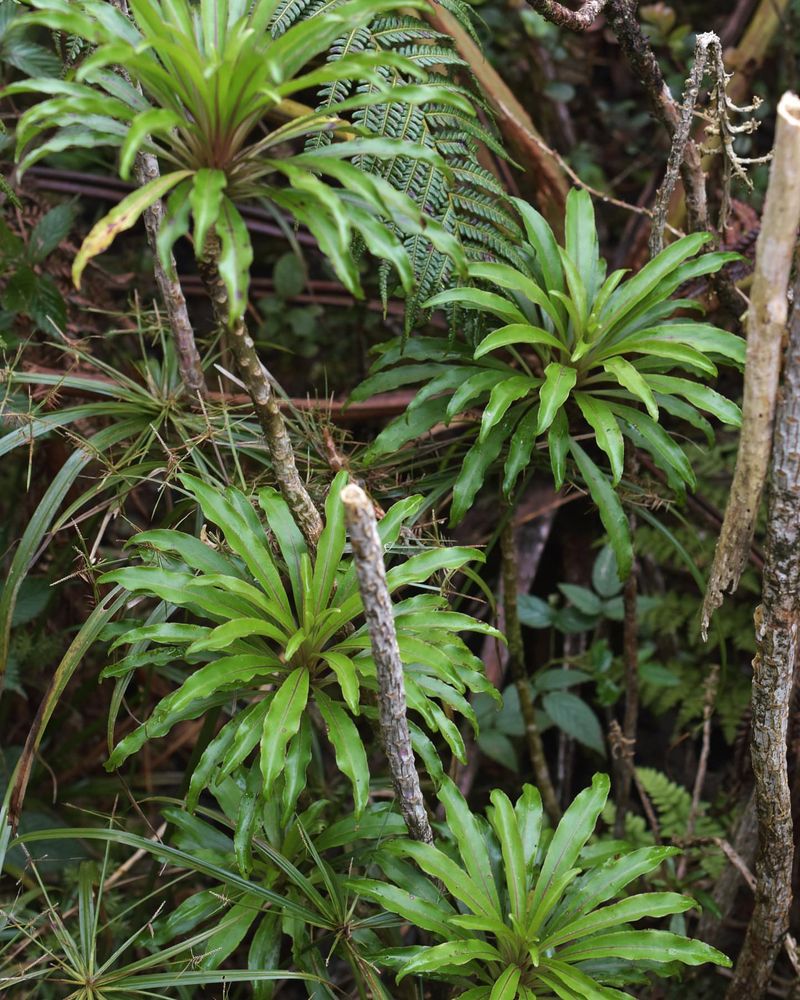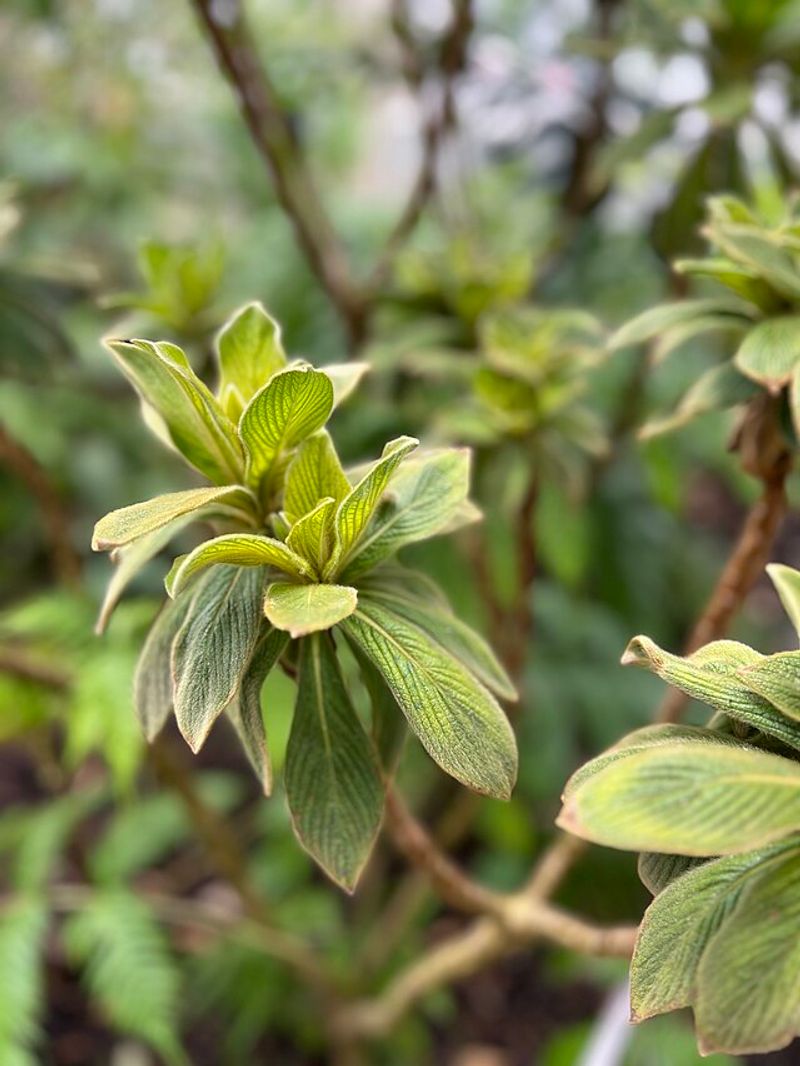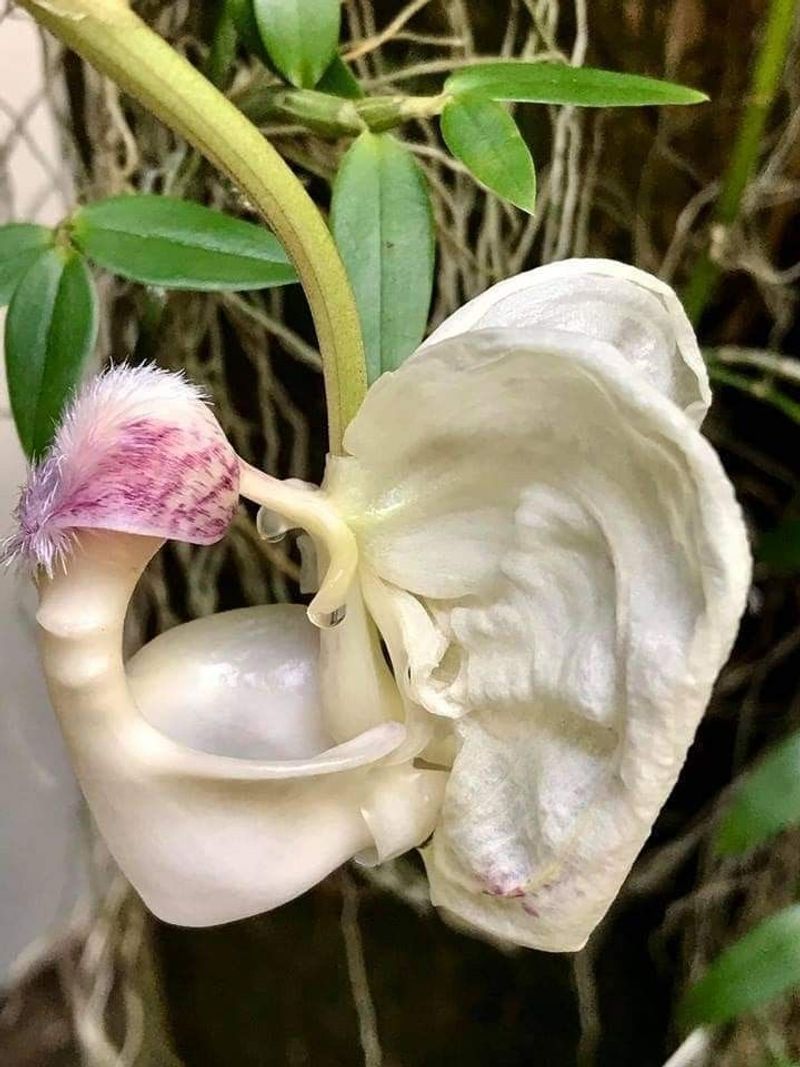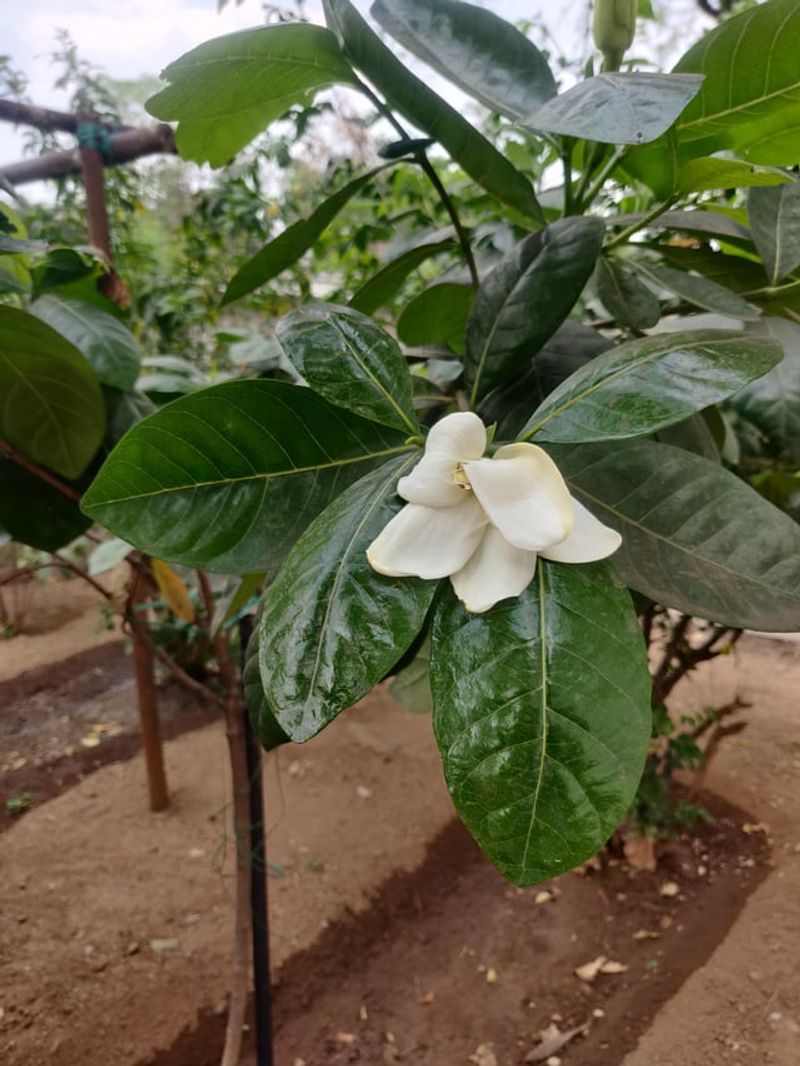Some of the world’s most beautiful plants no longer exist in the wild—but they’re still blooming in gardens, thanks to people like you. These 15 rare species were wiped out by habitat loss, climate change, or overharvesting, yet gardeners have kept them alive.
Discover the stunning plants that only exist today because someone chose to plant, protect, and preserve them.
1. Toromiro Tree (Sophora toromiro)
Native to Easter Island, this small tree disappeared from the wild in the 1960s. The islanders had harvested nearly all the trees for wood carvings and boat building, leaving none to reproduce naturally.
Luckily, botanists collected seeds before the last wild tree died. Today, the Toromiro grows in botanical gardens in Europe and Chile, with conservationists working to eventually reintroduce it to Easter Island.
2. Café Marron (Ramosmania rodriguesii)
For years, botanists thought this plant was completely extinct until a schoolboy on Rodrigues Island spotted a lone specimen in 1980. Despite numerous attempts, this single wild plant never produced viable seeds.
Cuttings were sent to Kew Gardens in London where horticulturists successfully propagated the plant. The white, tubular flowers now bloom regularly in protected collections, keeping this species from disappearing forever.
3. Franklin Tree (Franklinia alatamaha)
American botanist John Bartram discovered this flowering tree in Georgia in 1765. Named after Benjamin Franklin, the species vanished from the wild by 1803 – likely due to a combination of collecting, habitat destruction, and disease.
Fortunately, Bartram collected seeds before the wild population disappeared. All Franklin trees alive today descend from these original seeds. Garden enthusiasts cherish its camellia-like white flowers and brilliant red autumn foliage.
4. Wollemi Pine (Wollemia nobilis)
Called a “living fossil,” this prehistoric tree was known only from fossils until 1994 when a park ranger discovered a small grove in Australia. With fewer than 100 trees remaining in a secret location, it’s considered extinct in the wild outside this tiny population.
Conservation efforts quickly led to propagation programs. Now, botanical gardens worldwide display these ancient-looking conifers with their unusual bubbly bark, and home gardeners can purchase their own living prehistoric plant.
5. Wood’s Cycad (Encephalartos woodii)
Discovered in 1895 in South Africa, only a single male plant was ever found in the wild. Despite extensive searches, no female plants have ever been located, making natural reproduction impossible.
The original plant was divided and now grows in botanical gardens across the globe. Modern attempts at creating hybrids or inducing gender changes in clones continue, but pure Wood’s Cycad remains a bachelor species – alive but unable to reproduce without human intervention.
6. Hawaiian Hibiscus (Hibiscus brackenridgei)
Hawaii’s state flower no longer grows freely in its native volcanic slopes. Agricultural development, invasive species, and urban growth pushed this golden-yellow beauty to the brink of extinction.
Today, conservation programs maintain small populations in protected areas, while botanical gardens and native plant enthusiasts grow them in controlled settings. Its bright yellow flowers with red centers continue to symbolize Hawaii, even as wild populations have disappeared.
7. Saint Helena Olive (Nesiota elliptica)
Endemic to the remote island of Saint Helena, this small tree vanished from the wild in 1994. Goats introduced by settlers destroyed seedlings, while habitat loss further diminished its chances of survival.
The last wild specimen was propagated at a local nursery, but sadly, the final cultivated plant died in 2003. Though technically extinct, seed banks maintain hope that the species might one day be revived through advances in plant tissue culture technology.
8. Père David’s Maple (Acer davidii)
Named after French missionary and naturalist Père Armand David, this striking maple with snake-bark patterning has disappeared from much of its native Chinese habitat. Deforestation and agricultural expansion claimed most wild populations.
Gardeners worldwide now treasure this ornamental tree for its distinctive striped bark and brilliant autumn colors. Botanical collections preserve genetic diversity of the species, while landscapers incorporate it into gardens as a living reminder of what has been lost in the wild.
9. Kokia cookei (Hawaiian Tree Cotton)
The last wild Kokia cookei tree was destroyed by a fire in 1978 on the Hawaiian island of Molokai. Before its demise, botanists had fortunately collected grafts and seeds.
One graft survived and was used to create new plants through careful propagation. The species now exists solely in cultivation, with its distinctive red flowers blooming in botanical gardens. Conservation efforts focus on maintaining genetic diversity in this extremely rare cotton relative.
10. Extinction Palm (Hyophorbe amaricaulis)
Only a single specimen of this Mauritian palm remains alive today, growing in the Curepipe Botanic Gardens. Despite its healthy appearance, the tree has never produced viable seeds, baffling botanists for decades.
Tissue culture attempts have repeatedly failed, making this perhaps the most endangered plant on Earth. Garden visitors can view this lonely palm – the last of its kind – knowing they’re witnessing a species that continues to survive but remains on the edge of permanent extinction.
11. Tokelau Buttonwood (Guettarda speciosa)
Rising sea levels have submerged much of this coastal tree’s natural habitat across Pacific islands. What remains faces threats from development and invasive species competition.
Botanical gardens throughout tropical regions now cultivate this species for its fragrant white flowers that bloom at night. The sweet perfume attracts moth pollinators, just as it did in the wild. Conservation programs aim to eventually restore populations to protected coastal areas.
12. Cyanea superba (Hawaiian Lobelioid)
The last wild plant of this spectacular Hawaiian lobelioid died in 2002. Rats eating the seeds and invasive plants choking out seedlings led to its disappearance from Oahu’s forests.
Scientists collected seeds before the wild population vanished. Today, botanical gardens and restoration sites maintain carefully tended specimens. Their long, curved white flowers still attract native Hawaiian honeycreepers in protected settings, preserving an ancient pollination relationship.
13. Cylindrocline lorencei (Mauritius Shrub)
This small shrub disappeared from Mauritius’ mountainous regions in the 1990s after habitat destruction and invasive species took their toll. For years, botanists considered it completely extinct.
Amazingly, seeds collected decades earlier and stored at Kew Gardens were successfully germinated in 2003. The resulting plants now grow in controlled environments. Their fuzzy silver leaves and daisy-like flowers continue to exist thanks solely to these carefully maintained garden specimens.
14. Roussea simplex (Mauritian Bell Flower)
Invasive ants disrupted this plant’s unique pollination relationship with geckos, causing its disappearance from Mauritius’ wild places. The last naturally occurring plants struggle against introduced pests and habitat loss.
Conservationists maintain specimens in protected gardens where they can manage the threats. The plant’s unusual orange tubular flowers, once pollinated exclusively by day geckos, now depend on hand-pollination by humans to produce seeds and maintain the species.
15. Nanu (Gardenia brighamii)
Once common across dry Hawaiian forests, fewer than 15 wild Nanu trees remain today. Cattle ranching, invasive plants, and loss of native bird pollinators have driven this fragrant gardenia relative to near-extinction in nature.
Botanical gardens throughout Hawaii now grow these trees, preserving their intensely fragrant white flowers for future generations. The scent of Nanu blossoms once guided Hawaiian travelers through forests – now these trees guide conservationists in understanding Hawaiian forest restoration.

